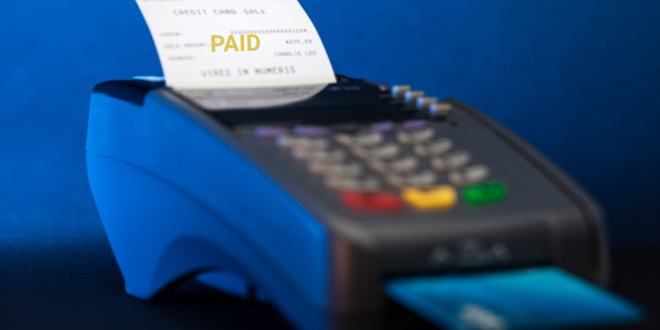The payment industry is exploding with innovation. From digital wallets to blockchain, experts predict advancements in payments will play a significant role in driving the success of retailers everywhere, online and off. Staying competitive within your industry means adapting to current payments technology, and embedded payment processing is a great place to start.
Embedded payment processors provide a seamless, efficient checkout. They simplify workflows and provide an improved customer experience. Crucially, these systems are more flexible than legacy and non-embedded systems: Software and hardware updates consistently ensure your ability to keep up with consumer demands, like the ability to offer new payment methods.
It’s time to get on board with embedded payments or risk letting your competitors overtake you.
What are embedded payments?

Also referred to as integrated payments, an embedded payment processor communicates with your POS system to process sales. Transaction data is automatically reconciled and recorded in your POS, meaning employees don’t have to input information manually.
For online transactions, your customers aren’t redirected to a third-party website to complete their purchases. Instead, they get a seamless in-page checkout experience that your business owns from start to finish.
On the other hand, a non-embedded payment solution requires you to manually enter all transaction data and sales information because your payment processor doesn’t communicate with your POS. Online, customers are taken to third-party websites to complete checkout.
Six embedded payment benefits
There’s a lot of value in adopting this type of payment processor. Here are six benefits an embedded solution offers.

- Faster, better checkout process
Without keyed-in transactions, checkout is more efficient for you and your customers. You’re free to process more transactions in less time–which could drive sales for your business. This goes for online transactions as well. How many times have you abandoned your shopping cart because a site led you to a not-so-secure-looking third-party page to input your card information? With embedded payments, customers can enjoy a secure, seamless checkout right on your site. - Simplified bookkeeping
With embedded payments, you’ll save time on bookkeeping because all data will be saved onto the correct ledgers in your POS software. Tax prep and other accounting tasks are simpler for you and your accountant when you don’t have to record data. - One solution for all your needs
Business operations are streamlined when your POS and payment processing needs are covered under one provider. You’ll save money by removing third-party accounts you once used for payment processing. A company that knows the ins and outs of your business can support you better than a patchwork solution of vendors and processors. - Keep up with all types of payment methods
Non-embedded payment processors are usually slower on the uptake when it comes to payment methods. Customers nowadays expect a variety of options, and it’s up to you to meet that demand. An embedded payment processor allows you to accept all types of payment methods – and you can count on software and hardware updates to account for other methods in the future. That includes credit cards, debit, digital wallets like Apple Pay, ACH payments, bank transfers and more. - Improved reporting drives better business decisions
With all your payment data accurately reconciled in one convenient place, you can generate comprehensive reports on payment types, sales and other information that provide insight into sales trends and customer behavior. In this way, an embedded system equips you with resources to make data-driven business decisions and improve your bottom line. It saves you money and resources. Without an embedded processor, you’d have to carry out time-consuming research or invest in outside sources like consultants. - Enhanced security
You don’t have to worry about handling security–any good embedded processor will help you comply with industry regulations and standards. This builds customer trust and protects your business from financial losses due to non-compliance or fraud. Embedded systems also reduce the risk of data breaches because payment data is securely transferred, reducing opportunities for interception. Embedded systems also provide encryption and tokenization, an added layer of security.
Why you need embedded payments

Embedded payment solutions help drive customer satisfaction, and that’s ultimately the most essential part of running a business. You’ll save money with all your needs under one roof, streamline workflows, eliminate costly human errors and reduce the risk of abandoned carts.
More broadly, companies quickly recognize the value of embedded payment solutions. According to a McKinsey report, embedded finance reached $20 billion in revenue in the US in 2021, telling us that this space will only continue to grow.
In a world of changing consumer behavior and rapidly emerging technology, legacy systems just don’t cut it anymore. Ultimately, the platforms you use to run your business impact your bottom line. Embedded payments are a critical part of the solution.
About the Author

JD St-Martin joined Lightspeed in May 2019 through the acquisition of Chronogolf, a SaaS company he co-founded in 2013. Before founding and growing his company, Mr St-Martin accumulated five years of experience in venture capital and private equity at Teralys Capital in Montreal and GE Equity in London, UK. Mr St-Martin holds a Master of Science in Accounting and Finance from the London School of Economics and a Bachelor of Commerce in International Business from the University of Ottawa.

